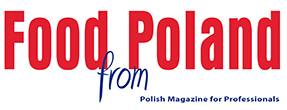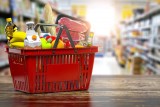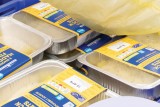In fact, in 2022, when we were fresh from the experience of the pandemic and simultaneously entering the peak of inflationary pressure, private labels accounted for 22.7% of the FMCG market. When sales data are compared with the consumer sentiment barometer, there is a clear correlation between the decline in consumer optimism in society and the growth in the value of private label sales. This is not surprising, as choosing ‘cheaper brands’ is a savings strategy cited by almost 30% of shoppers. However, by early 2025, as economic uncertainty eases, this share rises to 24.1%. An increase of less than one and a half percentage points may not seem significant, but behind this increase lies an additional PLN 13 billion generated by private labels. Currently, the value of private label sales in Poland amounts to almost PLN 63.5 billion per year, the lion’s share of which is accounted for by food products (84% of the value), but also by chemical and cosmetic products (the remaining 16%). This just goes to show that once private label is on the shopping list, it is there to stay.
How do private labels win the hearts of Poles? Of course, the aforementioned price-performance ratio is a key criterion in purchasing decisions, but private labels today have their own character. Shoppers appreciate brands that respond to their individual needs by offering local, organic or trendy products. Convenience products, especially ready meals, food-to-go and healthy snacks, also play an important role in private label development. Retailers are investing in the development of their products, trying to compete with large, well-known brands, including in terms of design, and are not afraid to fight for their place in the premium product segment. Choosing a private label is increasingly a conscious decision rather than an alternative.
The share of private label in the FMCG market is even more impressive when we look at specific product categories. The category in which private labels generate the highest sales is pre-packed cold cuts - this is the third largest category in the total Polish shopping basket in terms of value, with private labels accounting for as much as 54% of the sales value of this category in Poland as a whole. This is followed by chilled ready meals (19th in value in Poland, with private label accounting for 75%) and yellow cheese (14th, with private label accounting for 59%). In the chemical and cosmetic categories, private labels are also highly competitive in the largest value categories. The categories with the highest sales value of private labels are toilet paper (2nd place in terms of value in the total basket, with private labels accounting for 74%), paper towels (5th place and 73% private label share) and nappies (14th place and 67% private label share).
The popularity of private label goes hand in hand with the continued expansion of discounters, which will add more than 600 new outlets between January 2024 and January 2025. As new stores open, their influence on our habits and consumer expectations grows. Examples from Western Europe show that with the concentration of trade, we can expect a further increase in the importance of private labels in Poland.
Przemysław Korotusz
Analytics Consultant
NielsenIQ
NIQ Market Track, Poland as a whole as a sum of markets: hypermarkets, supermarkets, discounters, large, medium and small grocery stores, petrol stations and alcohol stores. The period analysed is 52 weeks ending 30 February 2025. Categories: 134 food categories and 77 chemical and cosmetic categories monitored.












